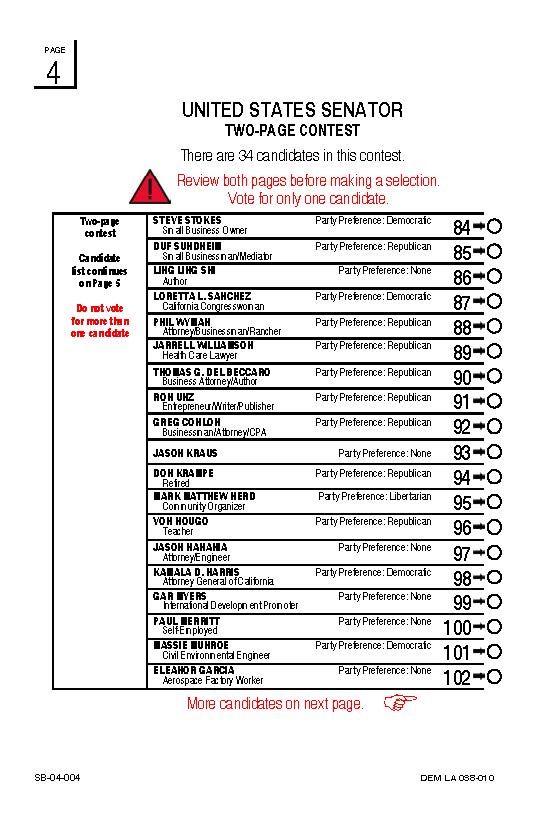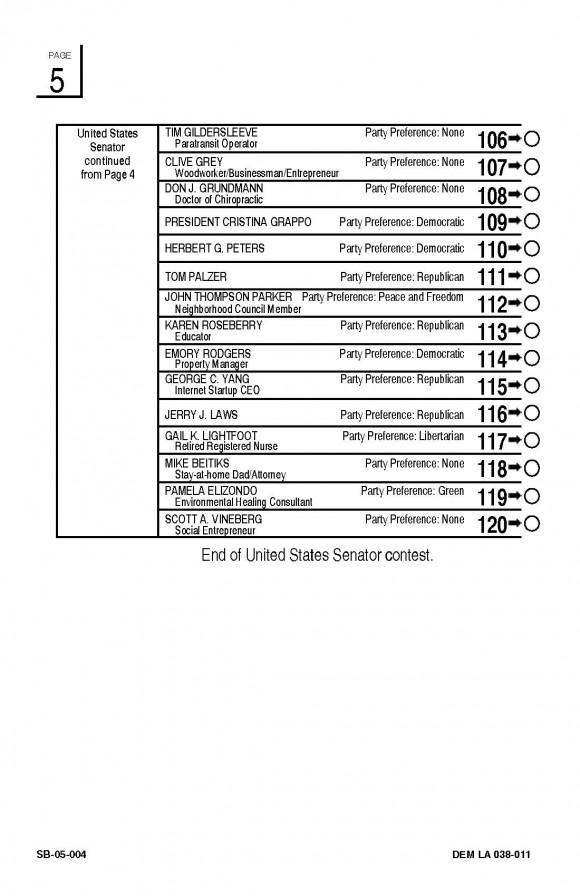I look forward to a more detailed analysis by voter registration and database match experts of the GAI report that will be presented to the Presidential Advisory Commission on Election Integrity , but even a cursory reading reveals a number of serious misunderstandings and confusions that call into question that authors’ understanding of some of the most basic facts about voter registration, voting, and elections administration in the United States.
Fair warning: I grade student papers as part of my job, and one of the comments I make most often is “be precise”. Categories and definitions are fundamentally important, especially in a highly politicized environment like that current surrounding American elections.
The GAI report is far from precise; it’s not a stretch to say at many points that it’s sloppy and misinformed. I worry that it’s purposefully misleading. Perhaps I overstate the importance of some of the mistakes below. I leave that for the reader to judge.
- The report uses an overly broad and inaccurate definition of vote fraud.
American voter lists are designed to tolerate invalid voter registration records, which do not equate to invalid votes, because to do otherwise would lead to eligible voters being prevented from casting legal votes.
But the report follows a very common and misleading attempt to conflate errors in the voter rolls with “voter fraud”. Read their “definition”:
Voter fraud is defined as illegal interference with the process of an election. It can take many forms, including voter impersonation, vote buying, noncitizen voting, dead voters, felon voting, fraudulent addresses, registration fraud, elections officials fraud, and duplicate voting.8
Where did this definition come from? As the source of the definition, they cite the Brennan Center report “The Truth About Voter Fraud” (https://www.brennancenter.org/sites/default/files/legacy/The%20Truth%20About%20Voter%20Fraud.pdf).
However, the Brennan Center authors are very careful to define voter fraud. From Pg. 4 of their report in a way that directly warns against an overly broad and imprecise definition:
Voter fraud” is fraud by voters. More precisely, “voter fraud” occurs when individuals cast ballots despite knowing that they are ineligible to vote, in an attempt to defraud the election system.1
This sounds straightforward. And yet, voter fraud is often conflated, intentionally or unintentionally, with other forms of election misconduct or irregularities.
To be fair to the authors, they do not conflate in their analysis situations such as being registered in two places at once with “voter fraud”, but the definition is sloppy, isn’t supported by the report they cite, and reinforces a highly misleading claim that voter registration errors are analogous to voter fraud.
David Becker can describe ad nauseam how damaging this misinterpretation has been.
- The report makes unsubstantiated claims about the efficacy of Voter ID in preventing voter fraud.
Regardless of how you feel about voter ID, if you are going to claim that voter ID prevents in-person vote fraud, you need to provide actual proof, not just a supposition. The report authors write:
GAI also found several irregularities that increase the potential for voter fraud, such as improper voter registration addresses, erroneous voter roll birthdates, and the lack of definitive identification required to vote.
The key term here is “definitive identification”, a term that appears nowhere in HAVAThe authors either purposely or sloppily misstate the legal requirements of HAVA. On pg. 20 of the report, they write that HAVA has a
“requirement that eligible voters use definitive forms of identification when registering to vote”
The word “definitive” appears again, and a bit later in the paragraph, it appears that a “definitive” ID, according to the authors, is:
“Valid drivers’ license numbers and the last four digits of an individual’s social security number…”,
But not according to HAVA. HAVA requirements are, as stated in the report:
“Alternative forms of identification include state ID cards, passports, military IDs, employee IDs, student IDs, bank statements, utility bills, and pay stubs.”
The rhetorical turn occurs at the end of the paragraph, when the authors conclude that these other forms of ID are:
“less reliable than the driver’s license and social security number standard”. This portion of the is far from precise.
and apparently not “definitive” and hence prone to fraud.
Surely the authors don’t intend to imply that a passport is “less reliable” than a drivers license and social security number. In many (most?) states, a “state ID card” is just as reliable as a drivers license. I’m not familiar with the identification requirements for a military ID—perhaps an expert can help out?[ED NOTE: I am informed by a friend that a civilian ID at the Pentagon requires a retinal scan and fingerprints]–but are military IDs really less “definitive” than a driver’s license?
If you are going to claim that voter fraud is an issue requiring immediate national attention, and that states are not requiring “definitive” IDs, you’d better get some of the most basic details of the most basic laws and procedures correct.
- The authors claim states did not comply with their data requests, when it appears that state officials were simply following state law
The authors write:
(t)he Help America Vote Act of 2002 mandates that every state maintains a centralized statewide database of voter registrations.14
That’s fine, but the authors seem to think this means that HAVA requires that the states make this information available to researchers at little to no cost. Anyone who has worked in this field knows that many states have laws that restrict this information to registered political entities. Most states restrict the number of data items that can be released in the interests of confidentiality.
Rather than acknowledging that state officials are constrained by state law, the authors claim non-compliance:
In effect, Massachusetts and other states withhold this data from the public.
I can just hear the gnashing of teeth in the 50 state capitols.I am sympathetic with the authors’ difficulties in obtaining statewide voter registration and voter history files. Along with the authors, I would like to see all state files be available for a low or modest fee, and to researchers.
There is no requirement that the database be made available for an affordable fee, nor that the database be available beyond political entitles. These choices are left to the states. it is wrong to charge “non-compliance” when an official is following statute (passed by their state legislatures).
I don’t know whether the report authors didn’t have subject matter knowledge or were purposefully trying to create a misleading image of non-cooperation with the Commission.
- The report shows that voter fraud is nearly non-existent, while simultaneously
claiming the problem requires “immediate attention”.
But let’s return to the bottom line conclusion of the report: voter fraud is pervasive enough to require “immediate attention.” Do their data support this claim?
The most basic calculation would be the rate of “voter fraud” as defined in the report The 45,000 figure (total potential illegally cast ballots) is highly problematic, based on imputing from suspect calculations in 21 states, then imputed to 29 other states without considering even the most basic rules of statistical calculation.
Nonetheless, even if you accept the calculation, it translates into a “voter fraud” rate of 0.000323741007194 (45,000 / 139 million), or three thousandths of a percent.
This is almost exactly the probability that you will be struck across your whole lifetime (a chance of 1 in 3000 http://news.nationalgeographic.com/news/2004/06/0623_040623_lightningfacts.html)
I’m not the first one to notice this comparison—see pg. 4 of the Brennan Center report cited below. And here I thought I found something new!
There are many, many experts in election sciences and election administration that could have helped the Commission conduct a careful scientific review of the probability of duplicate registration and duplicate voting. This report, written by Lorraine Minnite more than a decade ago lays out precisely the steps that need to be taken to uncover voter fraud and how statewide voter files should be used in this effort. There are many others in the field including those worried about voter fraud and those who are skeptics of voter fraud who have been calling for just such a careful study.
Unfortunately, the Commission instead chose to consult a “consulting firm” with no experience in the field, and which chose to consult database companies who also had no expertise in the field.
I’m sure that other experts will examine in more detail the calculations about duplicate voting. However, at first look, the report fails the smell test. It’s a real stinker.
—
Paul Gronke
Professor, Reed College
Director, Early Voting Information Center
http://earlyvoting.net


